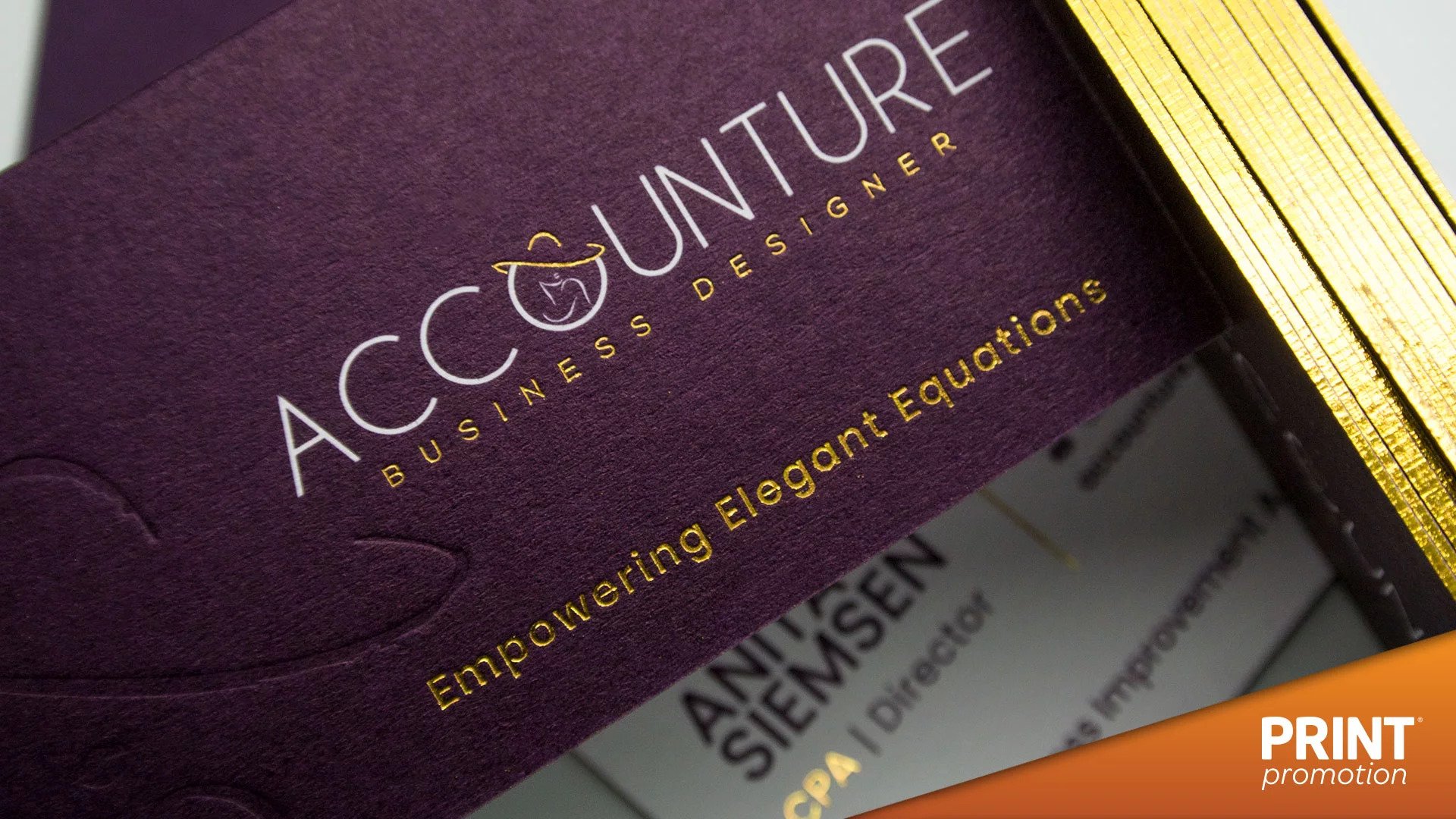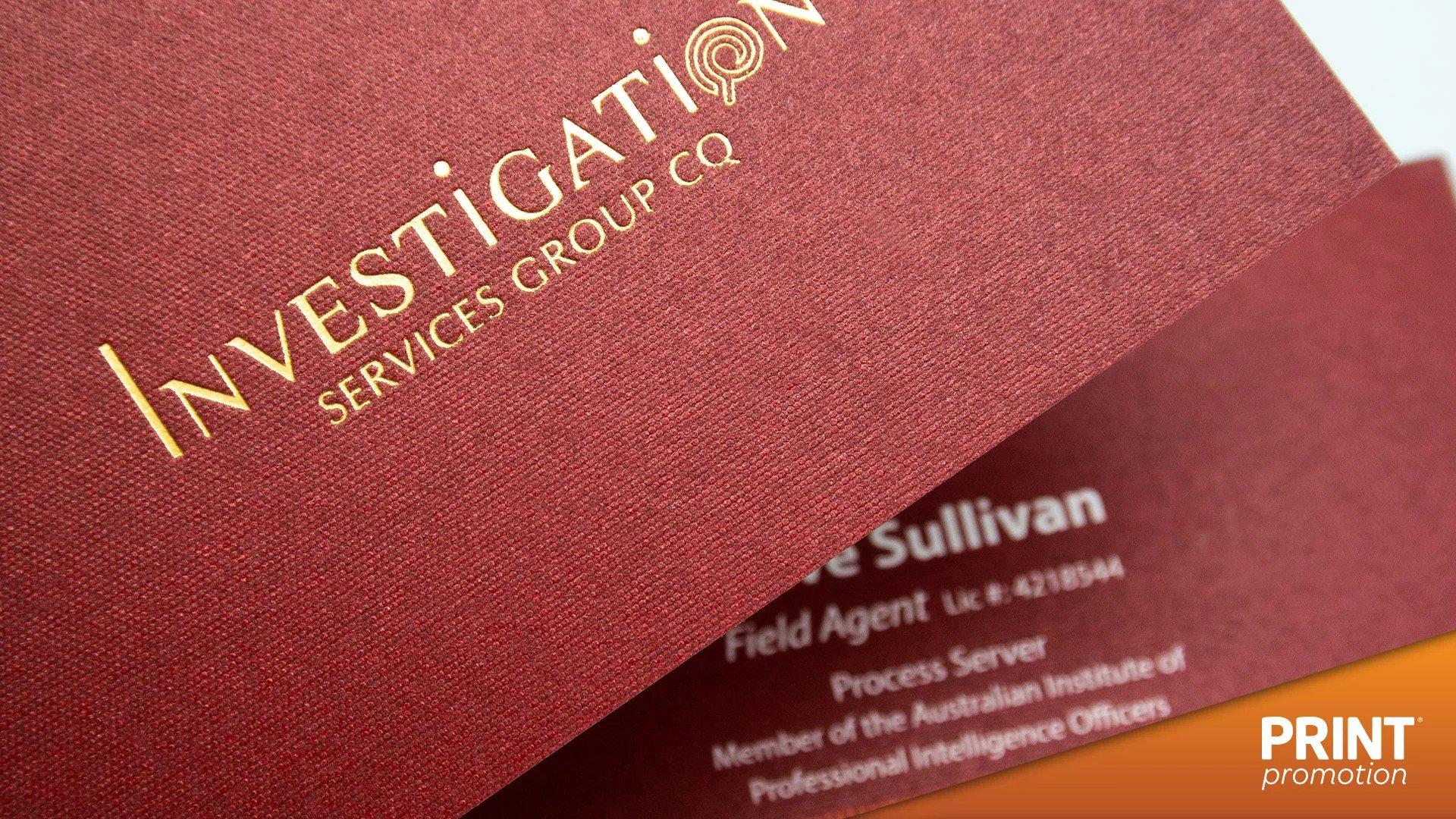In a world dominated by digital communication, the humble business card may seem like a relic of the past. However, for Steve Kuebler, the founder of Print Promotion, business cards are not just a piece of paper with contact details; they are an art form that leaves a lasting impression on potential clients.
With a passion for creating unique and striking business cards, Steve has become a specialist in this area, offering an array of medium and print finishing options to suit every individual business. In this interview, Steve shares his insights into the significance of business cards in the digital age, the key elements of well-designed cards, and the importance of sustainability in the printing industry.
Steve, how did you develop an interest in business cards and what led you to specialize in this area?
Business Cards are often the first marketing collateral that is exchanged with a potential client. Due to this I dedicated my efforts to providing the best selection of medium and print finishing options to allow the perfect card for every individual business.
Not only does design play a vital role, but the use of card stock can send the right message to their intended audiences.
In the digital age, where electronic contacts are prevalent, what makes business cards still relevant and important for professionals?
There’s no doubt that cards are used less in an electronic age, however, a quality, specialised card still hold a lot of weight and is the first marketing opportunity to impress a potential client when meeting face to face. Not only does is speak about your values, but it can also be a talking point / a pathway to ‘warm up’ a conversation.
There is also the option of using ‘vCards’ by use of QR code or NFC chips in the card. This allows simple instant digital transfer of all contact details to be received as a contact on the recipient’s phone.
If you meet people face to face, you will always look unprofessional without a business card.
Ask yourself, do you make a purchasing decision on the spot without research? If not, you would appreciate a ‘reminder’ of the people you have engaged.
It is the most tangible, accessible marketing product – and a way to shine over competitors… if done right.
What are some key elements or information that should be included on a well-designed business card?
Just as every business is different, every card should be different.. this being said, the number 1 rule is “less is more”.
There are not too many businesses out there that do not want to drive more traffic to their website.
Keeping this in mind, logo, website and basic contact details are the ‘must haves’.
Print Promotion pride’s itself for getting the best out of every individual job.
Once budget and card option (laminated, uncoated, plastic or metal) is established, we can then advise how to edit an existing design, or create a design to suit.
Can you share any unique or creative business card designs that you have come across or created yourself?
Laminated cards – 350gsm Matt laminate > print finishing options: Spot UV | Gold Foil | Gold Ink |

This card was designed to promote ‘ tech’ , ‘new’ , and ‘class’.
The background patterns has blind spot UV ‘X’ pattern. This is designed to be subtle , but to make you look closer when light reflects off it.
The ‘data lines’ has been printed with Pantone Metallic 871 ink. Looking closely it exposes a slightly glitter texture.
The circle and bitcoin is foil stamped with Gloss Gold. This adds the ‘bling’ factor to the card.
None of the above-mentioned items would make the cards look anything but ordinary if just printed. The specialist print finishing options used in the design process has made this card what it is.
Uncoated cards – 550gsm Premium Cotton > print finishing options: Gold Foil | Debossing | Foil Edges

This card was designed to promote a stand out accountant.
A quality card starts with a quality stock. Our 550gsm premium cotton is fibrous and beautiful to the touch. Weighing in at 0.72mm in thickness, it is ridged and allows for foil edging.
Elements of the logo were used subtly in the debossing and foil stamping.
Uncoated cards – 335-400gsm Textured > print finishing options: Matt Gold Foil

Simplicity is key when you want to make you brand look premium.
A matt gold foil against a textured background is more hat enough to achieve this (with this logo).
One of the things about a quality stock is it allows for better resolution foil stamping. Some stocks will only foil a minimum artwork wigth of 0.25mm with a 0.25mm gap in-between artwork. This stock has a foil minimum artwork width of 0.1mm with a 0.1mm gap in-between artwork!
There are three different stock options within this product. Microbeads (as pictured), Eggshell and Linen.
Plastic Cards – Premium Transparent > print finishing options: White ink screen print

For this card, we used elements of the logo for the transparency and semi transparency.
Having a transparent base, we add white screen-print backer to both sides of the card. This allow for two sided design (which, from a marketing perspective is great as you want as much uncluttered real estate for you logo as possible).
By then adding the fll colour print ,you can print over the white base – and – the non white backer (on one side) which gives a semi transparent image. This open up a completely new dimension to designers creativity.
Metal Cards > finishing options: Brushed metal | Deep Etching | Engraving | Screen printing

A sturdy 0.8mm thick brushed metal card. This demanges attention when it lands inyour hand – not only due to its weight, but also its class.
The ‘Shore Financial’ component of the logo is ‘deep etched’ which requires a minimum thickness of a 0.4mm thick card. We used highlight colours of the log in the ‘o’ to blend a mixture of the deep etching and the print – this brings though brand unity with finishing effects that make the most out of the card. On the back of the card there is standard screen printing + etching of their awards and accolades – this was intended to look more premium’ and make you look closer to reveal more.
We offer stainless steel cards from 0.3 to 1mm in thickness.
With sustainability being an important consideration today, how can businesses create eco-friendly business cards without compromising on quality?
This is a very interesting topic to me. I strive to create a ‘life’ for all works we do at Print Promotion. This is why we only sell sustainable promotional goods; I detest items such as ‘cheap pens’ that are destined for landfill after a few uses.
The same applies to business cards. If you create something ‘special’, chances are it won’t be thrown in the bin after a few days.
The other reason a quality card is beneficial is often they are kept and passed on to associates.
Over the years, we have been told by our return customers many times that their cards come up in conversation with their customers – or they have won additional business as their cards were passed on from client to contact.
Did you know that plastic cards are more easily recyclable than standard laminated business cards?
It’s about the process required to separate the elements of a product – and frankly very complicated.
Based on this we still recommend plastic cards to tradies and the likes as they can keep cards in their work pants, it can go through the wash, and will not spoil. At the end of the day, there is a right card to every individual business.
What are some common mistakes or pitfalls that individuals or businesses should avoid when designing their business cards?
- knowing what type of card they want – or what print finishing they want to use first.
It is important to know the limitations of the print finishing (ie minimum artwork thickness / minimum gap in-between artwork ) before design commences - Don’t add too much information
Do not dilute you logo by cluttering it with too much information.
Remember, once it’s printed, you can’t change it – but you can make easy changes to a website. Take this into consideration if you need to list your offerings - NFC only tap cards
Having only one card, tapping it on someone’s phone, and not leaving them any marketing collateral. Your details will be lost amongst all other contacts in your phone. There is nothing to remind the potential customer of your services (compared to having a potential piece of art left on the desk demanding attention ) - Think sustainable – give a reason for people to hang on you your card – even better – pass it on after they have engaged with your services
What advice would you give to someone who is looking to make their business card stand out and leave a lasting impression?
This really comes down to seeing the business logo and having an appreciation of what market segment they are seeking. We are proud to offer a complimentary 45min consultation to give our thought on what we would do to create a design or to get the most out of an existing design to make the most out of the project.
Looking ahead, what are your future plans and goals?
We love building relationships and seeing business grow. This has not changed since 2008.
Steve Kuebler’s passion lies in creating unique and striking cards that leave a lasting impression on potential clients. He shares insights into the key elements of well-designed business cards, showcases creative examples, and emphasizes the importance of sustainability in the printing industry. With a focus on building relationships and fostering business growth, Steve’s expertise in the art of business cards continues to make a remarkable impact.
You can follow up with Steve Kuebler for a free consultation to see how to make the best business cards.


